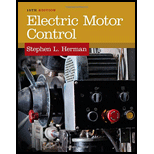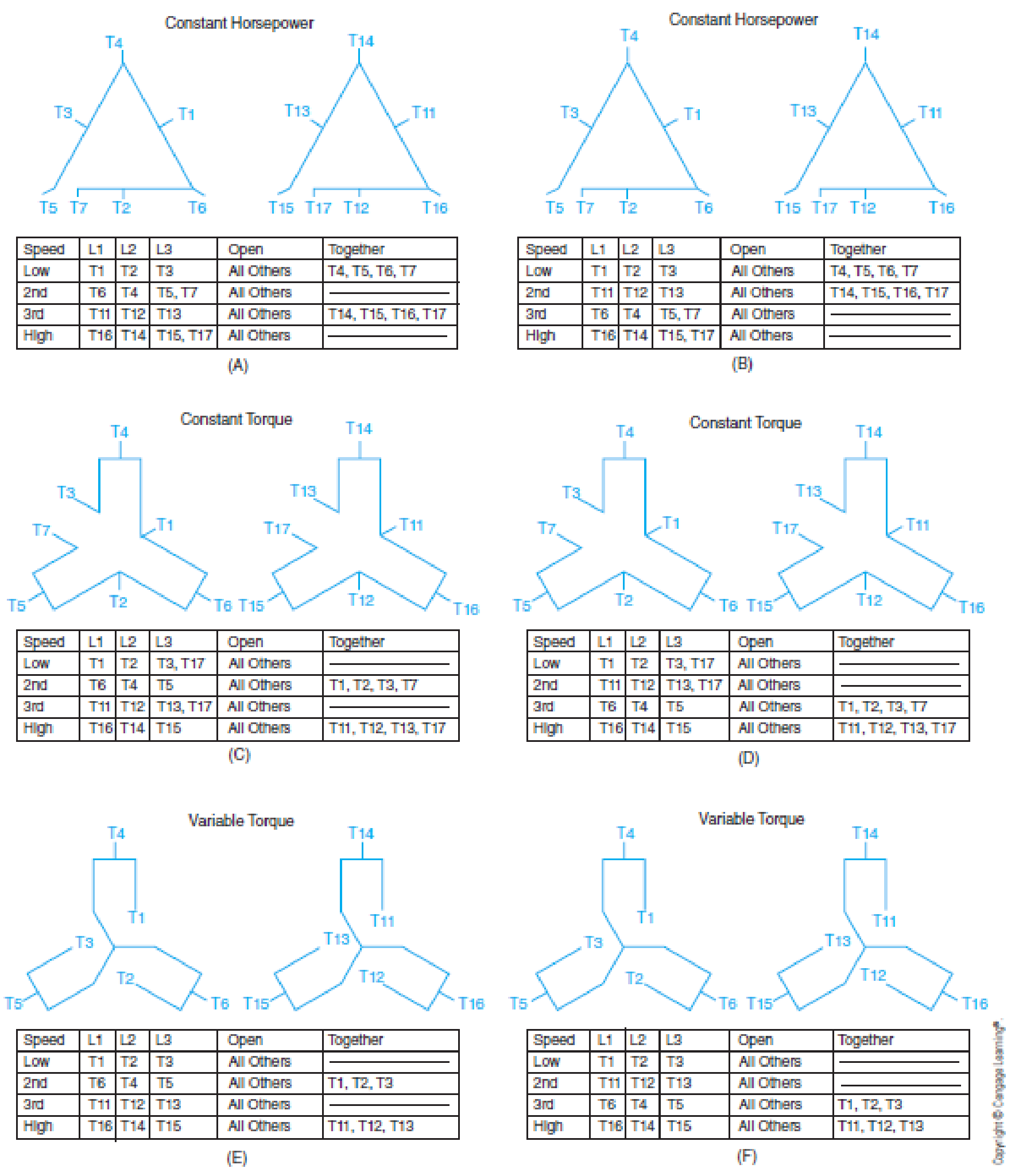
Electric Motor Control
10th Edition
ISBN: 9781133702818
Author: Herman
Publisher: CENGAGE L
expand_more
expand_more
format_list_bulleted
Concept explainers
Textbook Question
Chapter 33, Problem 7SQ
Why are different motor connections shown for what appears to be the same motor in the various diagrams in Figure 33–2?

FIG. 33–2 Typical arrangements for four-speed, three-phase, two-winding motors.
Expert Solution & Answer
Want to see the full answer?
Check out a sample textbook solution
Students have asked these similar questions
I need help with this problem and an explanation of the solution for the image described below. (Introduction to Signals and Systems)
Determine the eigenvalues and eigenvectors of using Gauss
elimination
-3
1
-3
A =
=
20
3
10
2
-2
4
[3 1 41
find Eigen values and Eigen Vector for A=0 26
LO 0 5
Chapter 33 Solutions
Electric Motor Control
Ch. 33 - Prob. 1SQCh. 33 - Prob. 2SQCh. 33 - Prob. 3SQCh. 33 - What is the primary reason for using a compelling...Ch. 33 - What is the purpose of an accelerating relay?Ch. 33 - When is it most important to use decelerating...Ch. 33 - Why are different motor connections shown for what...Ch. 33 - How many windings are required for three-speed...
Knowledge Booster
Learn more about
Need a deep-dive on the concept behind this application? Look no further. Learn more about this topic, electrical-engineering and related others by exploring similar questions and additional content below.Similar questions
arrow_back_ios
SEE MORE QUESTIONS
arrow_forward_ios
Recommended textbooks for you

 Delmar's Standard Textbook Of ElectricityElectrical EngineeringISBN:9781337900348Author:Stephen L. HermanPublisher:Cengage Learning
Delmar's Standard Textbook Of ElectricityElectrical EngineeringISBN:9781337900348Author:Stephen L. HermanPublisher:Cengage Learning Electricity for Refrigeration, Heating, and Air C...Mechanical EngineeringISBN:9781337399128Author:Russell E. SmithPublisher:Cengage Learning
Electricity for Refrigeration, Heating, and Air C...Mechanical EngineeringISBN:9781337399128Author:Russell E. SmithPublisher:Cengage Learning


Delmar's Standard Textbook Of Electricity
Electrical Engineering
ISBN:9781337900348
Author:Stephen L. Herman
Publisher:Cengage Learning

Electricity for Refrigeration, Heating, and Air C...
Mechanical Engineering
ISBN:9781337399128
Author:Russell E. Smith
Publisher:Cengage Learning
How Electric Motors Work - 3 phase AC induction motors ac motor; Author: The Engineering Mindset;https://www.youtube.com/watch?v=59HBoIXzX_c;License: Standard Youtube License